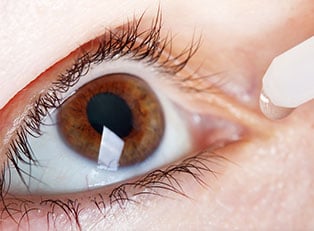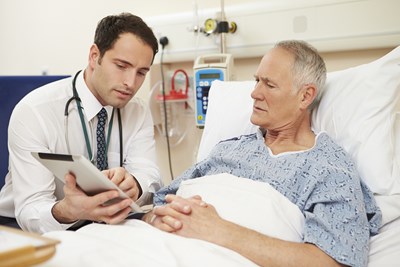A stye (or sty), also called a hordeolum, is a small and painful pimple-like bump that appears on the eyelids. Styes are caused by an infection in the oil glands of the eyes. Depending on which gland is affected, it may be considered an external hordeolum or an internal hordeolum. Here is a look at the causes, symptoms, diagnosis, and treatments of styes.
Stye Causes
The meibomian gland is located directly behind the eyelashes. It is a sebaceous gland that produces a thin and oily eye lubricant (meibum); meibum is supposed to keep the layer of tears that cover the eye from evaporating. One of these ducts can become blocked, causing an internal stye. Additionally, the glands of Zei may become blocked. Glands of zei produce a sebum that keeps the eyelashes moist. Located on the edge of the eyelid, a blocked gland of Zei may lead to an external stye.
In many cases, there may be an underlying issue causing the oils to become thick, which prevents it from producing and flowing the way it should. Because of the stagnation of the eye lubricants, it becomes easier for bacteria to enter the eye. Staphylococcus aureus is frequently responsible for this particular type of eye infection as well. Staph bacteria may infect the eyelash follicle, apocrine (Moll) gland, glands of Zei, or a stye may also be a complication of blepharitis, an inflammation of the eyelids that often occurs as a result of infection.
Stye Symptoms
Physically, a stye will appear as a small, red bump. It may have a tiny white “head” in its center, which is responsible for its likeness to a pimple, boil, cyst, or abscess. You may notice more tearing in your eye than normal, and the eyelid may be red, swollen, or warm in the surrounding area. Additionally, there is a lot of pain often associated with a stye, both at the site of the stye and on the eyelid. If you have an underlying issue (such as a blepharitis, meibomitis, or rosacea), the symptoms of these disorders will, of course, present as well.
Diagnosing a Stye
In many cases, at-home treatment will be sufficient to manage a stye, and it will go away after a few days. One of the most important aspects of figuring out what is on your eyelid is not to confuse a stye with with a chalazion (pronounced: kuh-LAY-zee-un; plural: chalazia). A chalazion is a painless granuloma (area of inflamed tissue), although the two are difficult to tell apart. Chalazia tend to be more chronic and may form farther from the edge of the eyelid or may the whole of the eyelid swollen. The biggest difference, aside from location, is that chalazia are not generally painful.
In any case, if your stye has not been getting smaller or continues to get bigger despite home care, it’s important to make an appointment with your primary care physician or eye doctor. A simple physical exam is often sufficient for diagnosis. However, according to the National Institute of Health, skin cancer located on your eyelid can mimic chalazia or styes, and so in some cases your doctor may recommend a biopsy.
Stye Treatments
A stye will usually go away within a few weeks, even without any special treatment. To help relieve pain, you can apply a warm compress to the eye. Apply it for 5-10 minutes 3-4 times a day. It is possible that this may encourage the stye to “pop” of its own accord (it is NOT recommended that you force the stye to pop). The release of pus inside is often very successful at relieving the pain, as this takes some of the pressure off the fragile tissue of the eyelids. If your stye doesn’t get better or gets worse, your doctor may recommend antibiotics to help clear up any bacterial infection that may be present. Eventually, it may be necessary for your doctor to make a small incision to allow the pus to drain.



